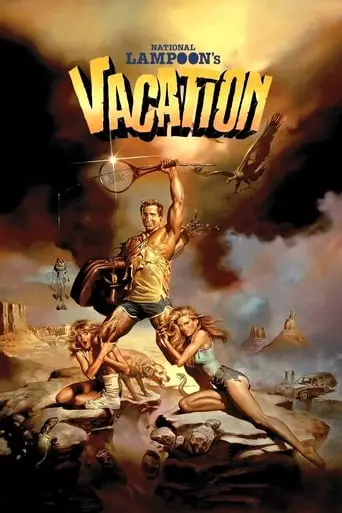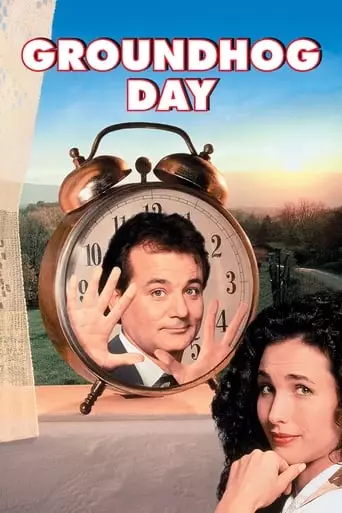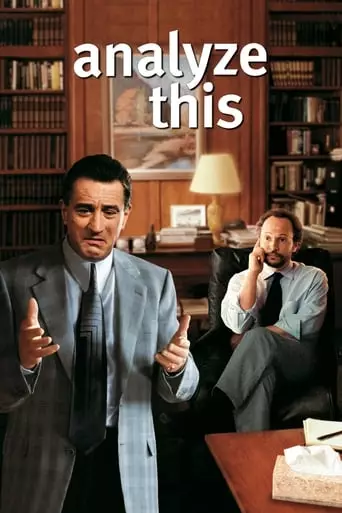Elliot Richards, a socially awkward IT worker, is given seven wishes to get the girl of his dreams when he meets a very seductive Satan. The catch: his soul. Some […]

Elliot Richards, a socially awkward IT worker, is given seven wishes to get the girl of his dreams when he meets a very seductive Satan. The catch: his soul. Some […]

Clark Griswold is on a quest to take his family to the Walley World theme park for a vacation, but things don’t go exactly as planned. National Lampoon’s Vacation is […]

At an exclusive country club, an ambitious young caddy, Danny Noonan, eagerly pursues a caddy scholarship in hopes of attending college and, in turn, avoiding a job at the lumber […]

A narcissistic TV weatherman, along with his attractive-but-distant producer, and his mawkish cameraman, is sent to report on Groundhog Day in the small town of Punxsutawney, where he finds himself […]

Countless wiseguy films are spoofed in this film that centers on the neuroses and angst of a powerful Mafia racketeer who suffers from panic attacks. When Paul Vitti needs help […]
Harold Ramis: The Genius Behind Comedy’s Golden Age
Harold Ramis was a towering figure in the world of comedy, known for his sharp wit, impeccable timing, and ability to craft stories that were as heartfelt as they were hilarious. As a director, writer, and actor, Ramis played a pivotal role in shaping modern American comedy, with classics like Caddyshack (1980), Groundhog Day (1993), and Analyze This (1999) defining his legacy. His work continues to inspire filmmakers and audiences, blending humor with profound insights into human nature.
Early Life and Career Beginnings
Born on November 21, 1944, in Chicago, Illinois, Harold Ramis grew up in a Jewish family and developed an early love for humor. After graduating from Washington University in St. Louis with a degree in English Literature, Ramis briefly worked as a substitute teacher and freelance journalist before pursuing a career in comedy.
Ramis’s comedic journey began at Chicago’s famed Second City, a renowned improvisational comedy troupe that has launched the careers of countless comedic legends. At Second City, Ramis honed his skills as a performer and writer, setting the stage for his transition to film and television.
Writing Success: Animal House and Stripes
Ramis’s breakthrough came as a co-writer of National Lampoon’s Animal House (1978), a raucous college comedy that became a cultural phenomenon. The film’s anarchic humor and irreverent spirit set a new standard for comedy, earning Ramis widespread acclaim as a writer.
Following the success of Animal House, Ramis co-wrote and starred in Stripes (1981), alongside Bill Murray. The military comedy was a box-office hit, showcasing Ramis’s on-screen charm and further solidifying his reputation as a comedic powerhouse.
Directorial Debut: Caddyshack
In 1980, Harold Ramis made his directorial debut with Caddyshack, a golf comedy that has since become a cult classic. Featuring an ensemble cast including Chevy Chase, Rodney Dangerfield, and Bill Murray, the film’s blend of absurd humor and memorable one-liners made it an instant favorite. Despite a chaotic production, Ramis’s ability to channel the improvisational talents of his cast resulted in a comedy that remains beloved to this day.
The Masterpiece: Groundhog Day
Arguably Ramis’s greatest achievement, Groundhog Day (1993) is a comedic masterpiece that transcends its genre. The film stars Bill Murray as a cynical weatherman trapped in a time loop, reliving the same day over and over. What begins as a high-concept comedy evolves into a profound exploration of redemption, self-improvement, and the search for meaning.
Groundhog Day was a critical and commercial success, earning praise for its inventive premise, sharp humor, and emotional depth. The film has since been hailed as one of the greatest comedies of all time, with its themes of transformation and resilience resonating across generations.
Later Career: Analyze This and Beyond
In the late 1990s, Ramis continued his success with Analyze This (1999), a comedy that paired Robert De Niro as a mob boss with Billy Crystal as his reluctant therapist. The film’s clever premise and strong performances made it a hit, leading to a sequel, Analyze That (2002).
Ramis’s later directorial efforts included The Ice Harvest (2005), a dark comedy-thriller, and Year One (2009), a prehistoric comedy starring Jack Black and Michael Cera. While these films received mixed reviews, they showcased Ramis’s willingness to experiment with different comedic styles.
Style and Themes
Harold Ramis’s work is characterized by its blend of sharp humor, relatable characters, and underlying warmth. His films often explore themes of self-discovery, redemption, and the absurdities of everyday life. Ramis had a gift for balancing slapstick comedy with heartfelt moments, creating stories that were both entertaining and meaningful.
As a director, Ramis had a collaborative approach, often allowing his actors to improvise and bring their own comedic sensibilities to the table. This trust in his collaborators resulted in performances that felt natural and spontaneous, elevating the humor of his films.
Legacy and Influence
Harold Ramis’s contributions to comedy are immeasurable. His films have become cultural touchstones, quoted endlessly and celebrated for their timeless humor. Beyond his work as a filmmaker, Ramis was known for his generosity and humility, mentoring younger comedians and fostering a spirit of collaboration in every project he undertook.
Ramis’s influence can be seen in the work of contemporary comedic filmmakers like Judd Apatow, Adam McKay, and Paul Feig, who have cited him as a major inspiration. His ability to combine humor with heart continues to set a standard for what comedy can achieve.
Personal Life and Passing
Ramis was married twice and had three children. He maintained close ties to his hometown of Chicago, where he lived for much of his life. Known for his kindness and wit, Ramis was beloved by friends and colleagues alike.
Tragically, Harold Ramis passed away on February 24, 2014, at the age of 69, due to complications from autoimmune inflammatory vasculitis. His death was mourned by fans and peers around the world, who remembered him not only as a comedic genius but also as a remarkable human being.
Conclusion
Harold Ramis’s legacy as a filmmaker, writer, and actor is one of laughter, warmth, and profound insight into the human experience. From the irreverent antics of Caddyshack to the philosophical depth of Groundhog Day, his work continues to entertain and inspire. Ramis’s films remind us of the transformative power of humor and the importance of finding joy in life’s absurdities. In the world of comedy, Harold Ramis will always be remembered as a true legend.